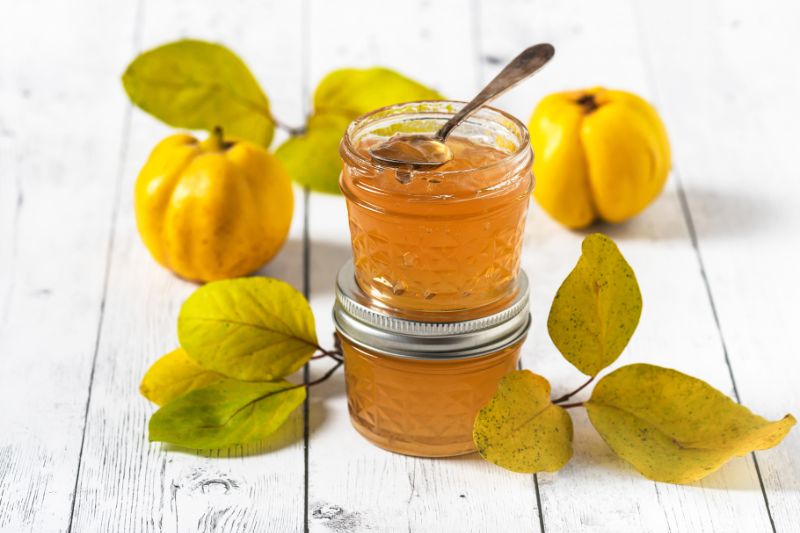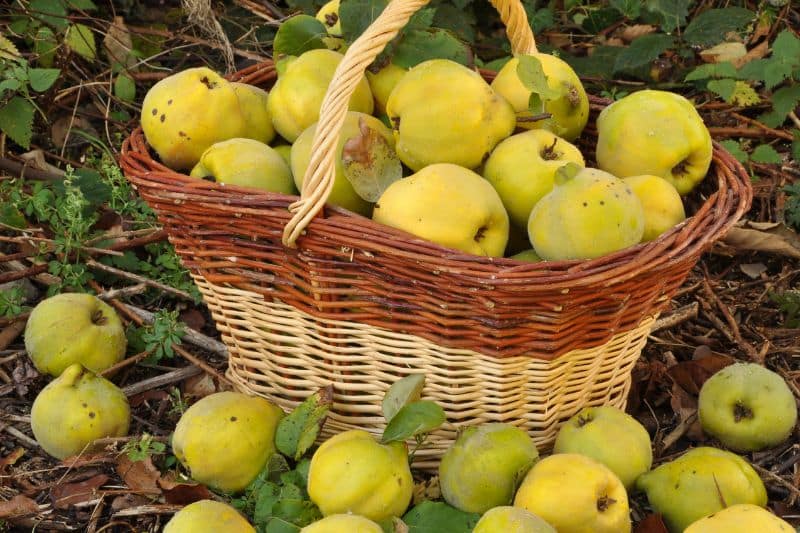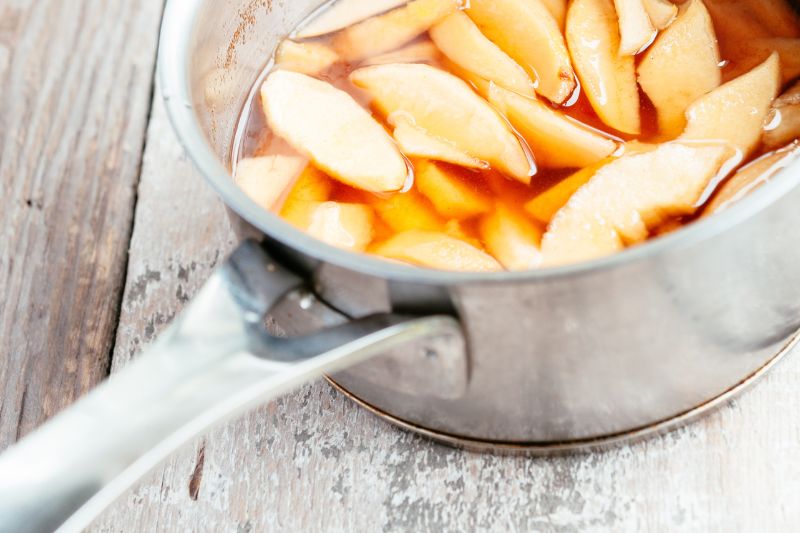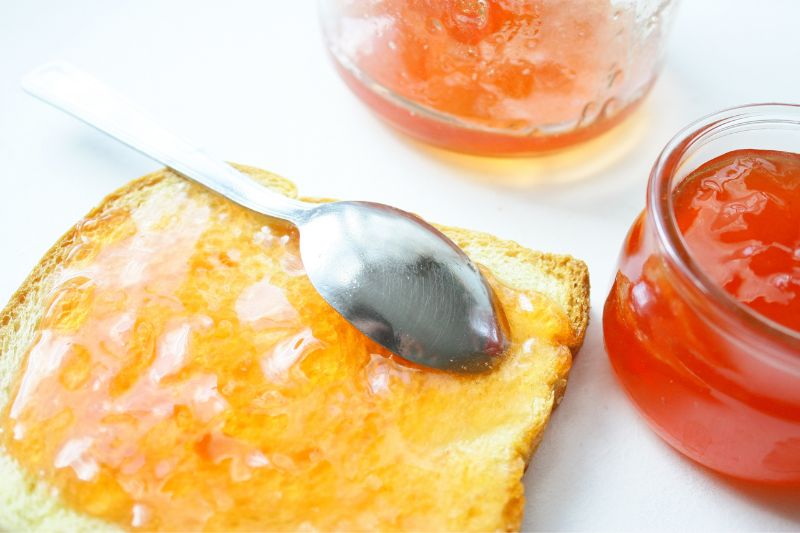
Selection and preparation of quinces
Before putting on the apron and starting the recipe, first go picking in the garden! And for a delicious jelly, nothing beats fully ripe quinces! A ripe quince is recognised by its deep yellow colour, firm texture and a subtle fruity scent. Avoid quinces showing signs of rot or bruising, as they can affect flavour and texture of your jelly.
Note: quinces fallen on soil can be gathered provided they show no wounds, spots or signs of mould.
Once picked, quinces require careful cleaning. Their surface is often covered with a fine down that should be removed before cooking. A quick rinse under running water, using a soft brush, and job done!

Ingredients for quince jelly
For this simple homemade recipe, you will need:
- Quinces
- Sugar (ideally a mix of 50% white sugar and 50% gelling sugar)
- Water
- Saucepan or jam pan
- Jam jars with screw lids
- Facultative: juice of half a lemon
Quince jelly recipe
Before starting, remember to sterilise your jam jars and their lids.
1- Cut quinces into quarters without peeling or removing the pips. Pips contain pectin which will help the jelly to set (and avoid using gelling sugar).
2- Place quince quarters in a large saucepan and cover with water. Bring to the boil, then reduce heat and simmer for about 30 to 40 minutes, or until quinces are tender.
3- Once quinces are cooked and tender, remove the saucepan from the heat.

4- Next, strain to obtain the juice. Use a fine sieve or a clean cloth to strain the mixture. Let the juice drip naturally for about an hour. Avoid pressing the fruit to keep the juice as clear as possible.
5- Measure volume of juice obtained. Then add same volume of sugar to juice (for example, for 250 ml of juice, use 250 g of sugar).
Ingrid's tip: during cooking, add a split vanilla pod for extra flavour!
6- Return mixture of juice and sugar to the saucepan. Add a little lemon juice if desired. Bring to the boil and cook over high heat for about 10 to 15 minutes. To check set, place a small amount on a cold plate: it should gel quickly.
7- Once jelly is ready, pour immediately into sterilised jars. Close jars and turn them upside down until cool to create a vacuum.
8- Store jelly in a cool, dry place. Unopened, quince jelly keeps for 1 to 2 years without loss of quality. Once opened, keep jar in refrigerator and consume within a month.
Tip: Cooked quinces, leftover from jelly preparation, can be turned into purée, compote, quinces in syrup, chutney or used as filling in savoury recipes.
Uses for quince jelly
Quince jelly, with its silky texture and sweet yet slightly tangy taste, is delicious spread on toast or scones, served with a cup of tea or coffee. Its unique flavour also enhances croissants and pain au chocolat, adding a fruity touch to these pastries.

As for pairings, quince jelly pairs perfectly with cheeses, particularly hard cheeses such as Manchego, Comté or Cheddar. It brings a fruity sweetness that contrasts nicely with salty character and texture of the cheeses.
For lovers of sweet-and-savoury, quince jelly can also be used as a condiment in meat dishes. It goes wonderfully with pork and duck, offering a sweet note that complements rich flavours of these meats.
Finally, quince jelly can be a surprising ingredient in dressings and marinades, adding a fruity note and a slight acidity that will enhance salads and grilled vegetables.































Comments